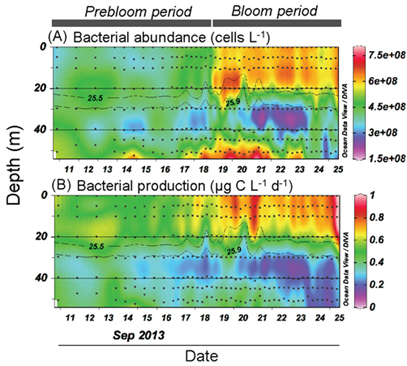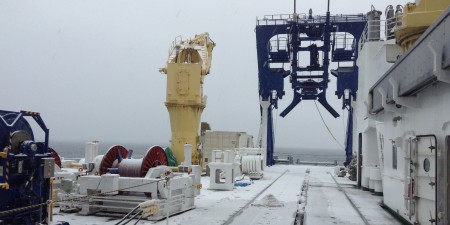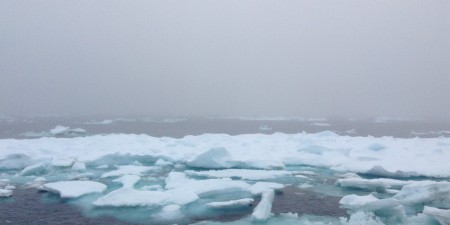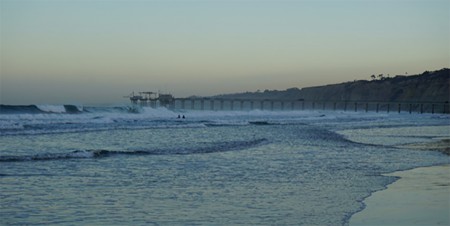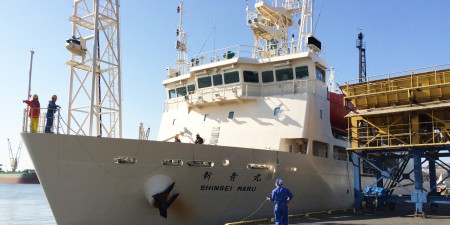Changes to the Arctic ecosystem induced by global warming—Increased production in heterotrophic microbial communities triggered by strong autumn winds
The progression of global warming is considered to be responsible for the rapid decline in the extent of Arctic sea ice, but what effect is this decline having on marine ecosystems and material cycles? Several studies have indicated that a decrease in sea ice will increase the amount of sunlight that penetrates the seawater, increasing primary production by phytoplankton. Other studies have suggested that the decrease in sea ice will expose more of the sea surface to the action of winds, promoting mixing of the seawater and upwelling of nutrients, and increasing the likelihood of phytoplankton blooms. However, these hypotheses have typically been based on computer simulations, and relatively few studies investigating these ecosystem responses have been conducted in the field.
In September 2013, we examined the effects of strong winds on biogeochemical cycling in the Arctic Ocean by conducting observations on the Chukchi Sea shelf in the western Arctic Ocean. Our findings showed that strong winds induced both seawater mixing and nutrient upwelling, resulting in a marked increase in primary production by phytoplankton and heterotrophic microbial communities. Measurements of the concentration and composition of dissolved amino acids in the seawater showed that the heterotrophic microbial communities were very efficient at absorbing the dissolved organic matter generated by primary producers. Although previous studies proposed that the activity of heterotrophic microbial communities is severely inhibited by the low seawater temperatures found in perennially cold waters such as the Arctic Ocean, our findings did not support this hypothesis. Further, in response to strong winds at the sea surface, marked increases in the activity and production of heterotrophic microbial communities were observed near the sea floor due to sediment resuspension. These findings demonstrate, for the first time, the considerable impact of declining sea ice on both primary production and the hitherto overlooked increase in microbial nutrient cycling by heterotrophic microbial communities. We consider these findings to be important for developing a more comprehensive understanding of the ecological changes occurring in the Arctic Ocean.
Published paper
- Uchimiya, C. Motegi, S. Nishino, Y. Kawaguchi, J. Inoue, H. Ogawa, and T. Nagata (2016) Coupled Response of Bacterial Production to a Wind-induced Fall Phytoplankton Bloom and Sediment Resuspension in the Chukchi Sea Shelf, Western Arctic Ocean. Frontiers in Marine Science-Marine Biogeochemistry | doi: 10.3389/fmars.2016.00231
http://journal.frontiersin.org/article/10.3389/fmars.2016.00231/full
Figure 1. Both bacterial abundance (A) and bacterial production rate (B) increased substantially in response to the development of wind-induced phytoplankton bloom on the Chukchi Sea shelf in the western Arctic Ocean, as indicated by the changes of the color in the upper water column between the pre-bloom and bloom periods. Note that bacterial abundance and production rate were also high near the seafloor during storms, indicating that the impacts of strong winds reached the bottom of the water column to influence the biogeochemical cycles at depth.
From Uchimiya et al. (2016) Frontiers in Marine Science doi: 10.3389/fmars.2016.00231
Figure2. The research vessel “MIRAI”
Figure3. View from “MIRAI”
